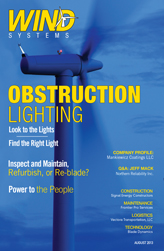Wind construction projects typically begin with a contract between the owner and the general contractor. This engineering, procurement and construction (EPC) contract establishes the “rules of the game” for the project, and the nature of the obligations each party will have to the other. Properly allocating major project risks through the EPC contract is an important part of being a successful contractor. This article examines a few of the more important sections of the EPC contract.
Scope of Work and Technical Exhibits
EPC contracts consist of the main body of the contract and several technical exhibits, often a dozen or more. These technical exhibits play a critical role in establishing the construction parameters. While parties commonly spend most of their negotiating time on the main contract, the most useful contracts result when the parties also spend significant time on the technical exhibits. A major exhibit, or group of exhibits, will be the “scope of work.” In all EPC contracts, both parties are well served by making sure that all technical exhibits, and in particular the scope of work, are accurate and complete.
Milestone Dates
The EPC contract should specifically define the milestone dates for the major construction activities, including the following: A.) The issuance date for a limited notice to proceed for engineering and procurement of long lead time items; B.) The issuance date for a full notice to proceed for all construction activities; C.) The turbine delivery schedule (start and end of deliveries, and number of complete turbines delivered per week); and D.) The date for provision of backfeed power by the utility; E) and all liquidated damage dates (typically substantial completion).
Schedule Changes
In addition, the EPC contract should define the circumstances under which the contract dates and time periods can change. The typical contract clauses allowing schedule changes include the following: A.) An owner-caused delay clause; B.) A force majeure clause; and C.) A material changes clause. Each of these important clauses should contain a list of items that, once they occur, will permit a change to the contract schedule. For example, it is common for the owner-caused delay clause to permit the schedule to be extended when items that are the owner’s responsibility (turbine deliveries, deliveries of other owner-provided material or equipment, backfeed power, etc.) do not occur on the scheduled date. In such cases, the contractor may be entitled to an extension of the construction schedule. In addition to these clauses, the contract should contain a change order clause that allows for both the owner and contractor to submit a change order request to the other. Change orders enlarging, or contracting, the contractor’s scope of work often require changes to the contract schedule.
Payment and Security Issues
The contract must establish payment procedures and requirements, as well as the security that each party will provide to make sure that their contract obligations are fulfilled. Payments clause should set out the payment timing, documentation and review requirements, and payment amounts. It is common to have a “schedule of values” exhibit that lists the payment value for all major construction activities and forms the basis of payment amounts. In addition, where the project owner is a single purposes entity, the contract should establish any payment security to be provided by the owner, such as a parent guarantee or a letter of credit. Likewise, the contract should establish any security required of the contractor, such as a parent guarantee or a payment and performance bond.
Completion Definitions and Liquidated Damages
Wind projects typically have critically important deadlines. The project power purchase agreement may have a deadline for providing power to the purchaser. The project interconnection agreement may contain a deadline for providing power to the grid. In addition, tax deadlines always play an important role in shaping a wind project construction schedule. Failure to meet any of these deadlines may subject the owner to liquidated damages, or the loss of tax advantages. It is common for EPC contracts to shift a portion of this risk to the contractor by way of liquidated damage provisions. Most contracts impose liquidated damages for the late completion of project substantial completion. Liquidated damage provisions should be clear on how the damages are calculated, and the conditions under which they will be imposed. For example, if liquidated damages are imposed for late substantial completion, the contract must specifically define what constitutes substantial completion. The most common contract clauses contain a list of tasks that must be completed by the contractor before substantial completion is achieved, as well as the specific approval.
Wind EPC contracts are complicated. Parties should use the contract to define construction parameters and to place risks on the party most able to control that risk.







































